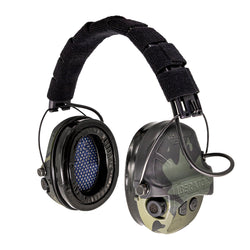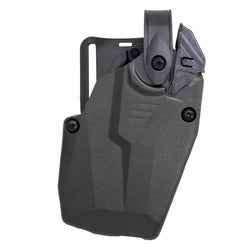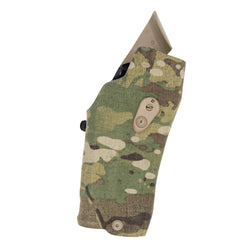Have you ever wondered if you’re gripping your gun correctly? When it comes to holding a handgun, there’s no one-size-fits-all approach. Whether it’s a revolver, semi-auto, or pocket pistol, each firearm demands a different technique.
It’s like trying to use chopsticks when you really need a fork—sure, you might manage, but wouldn’t it be easier to use the right tool for the job? Despite its importance, proper grip technique is often one of the most overlooked aspects of improving shooting skills.
I grew up shooting revolvers — my Grandfather taught me — and so I used the same thumb-lock grip for everything. He loved shooting 1911 handguns as well, but he used about the same grip for both.

It took me a while to realize there was a better way. During firearms training at the police academy, I had to learn a new grip, and it felt like learning a foreign language at first. However, with repetitive practice and some adjustments, that simple — but important — change greatly improved my accuracy, speed, and overall control.
Everyone is different so I don’t like to pick a specific grip and say everyone must use it. Do what works for you. But I have learned the high grip (which is the most common today) does work best for shooting semi-auto pistols.
Let’s take a look at this grip in more detail.
What is the High Grip?
The high grip, or “thumbs forward grip,” is the reigning champion among modern handgun techniques. This grip emphasizes bringing your dominant hand as high up on the gun’s backstrap as possible while wrapping your support hand forward to lock around your fingers and the grip. Your thumbs should point forward, resting on the frame, with your fingers applying consistent pressure on the firearm.
This technique gained popularity in competitive shooting and quickly spread to law enforcement and civilian shooters. The high grip maximizes control over recoil—especially in semi-automatic pistols—by keeping your hand closer to the bore axis (the imaginary line running through the barrel). This proximity reduces muzzle flip, allowing for quicker follow-up shots and improved accuracy.

Factors like caliber, weight, and slide height can all affect how a gun behaves when fired. A .45 ACP will have more recoil than a 9mm, and a lightweight gun will feel snappier than a heavier one. The high grip helps mitigate these differences and gives you better control regardless of the firearm’s characteristics.
It also reduces the chances of limp-wristing, which is a common issue that can cause malfunctions in semi-autos. Limp-wristing happens when the frame of the gun is not held securely while the slide travels backward. During this type of malfunction, the frame of the gun also moves and does not allow the spent casing to fully eject and/or a new round to be inserted into the chamber.
Grip Tip in Under 90 Seconds by Rick Crawley
I like to do a little traveling and check out a variety of firearms courses. One of the best courses I have taken was from Rick Crawley, founder of Achilles Heel Tactical.
Crawley is a competitive shooter and former military and law enforcement veteran. He’s also a member of the Safariland CADRE. One of the best videos I’ve seen on the basics of the high grip technique is his YouTube video “Grip Tip in Under 90 Seconds.”
In this short video, Crawly gives a simple demonstration of the high grip. He explains the importance of applying pressure at specific points on the grip and notes that while your body may naturally anticipate the shot, managing that anticipation with proper grip and finger control is key.
Other Considerations for a Good Grip
Another reason the “thumbs forward” grip is so useful is that it doesn’t require you to adjust your strong hand grip when adding or removing your support hand. When transitioning from a one-handed draw to a two-hand grip, simply lifting your dominant thumb slightly makes room for the support hand, ensuring a smooth and consistent grip—a crucial factor for both competitive shooting and self-defense.

Besides the correct grip, you also want to pay attention to the amount of pressure used by each hand. Your dominant hand, which pulls the trigger, should not be squeezing as much as the support hand. Over-squeezing with your dominant hand can cause your shots to go low and left.
Instead, let your support hand do all the squeezing, your strong hand can focus on just one task, pulling the trigger.
Have you tried the high grip?
Mastering your handgun grip is one of the simplest and most effective ways to improve your shooting. If it feels uncomfortable at first, practice with an airsoft or training gun until your body is used to the feel of the grip. Once you’ve formed the correct grip instinctively, focus on refining your trigger finger and overall gun control at the range.
My opinion is a handgun grip is never perfect, just like any other aspect of shooting. There is always room to improve. But it’s important to have a good foundation to build upon.
Like I said in the beginning, I’m not going to say this is the only handgun grip you should ever use. My Grandfather shot pretty well with the old thumb lock grip he grew up using. It worked for him and there’s nothing wrong with that.
But there’s also nothing wrong with trying something new. Give the high grip a try and see how it improves your control and accuracy on the range!









